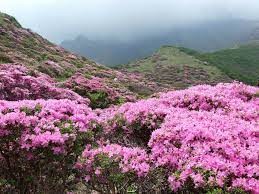Published on: February 22, 2023
Rhododendrons
Rhododendrons
Why in news? The Darjeeling and Sikkim Himalayas are largest home to rhododendrons found in India, reveals the latest publication of the Botanical Survey of India (BSI).
Highlights:
- Darjeeling and Sikkim Himalayas comprise only 0.3% of India’s geographical area but the region is home to one-third (34%) of all rhododendron types
- Rhododendron, meaning rose tree in Greek, is considered an indicator species for climate change.
- The reports highlights the ecological significance of the region as far as an indicator species like rhododendron is concerned
Threats
- They are facing a high threat due to anthropological pressures and climate change
- Rhododendron edgeworthii, with white campanulate flowers, recorded a huge habitat decline in both Darjeeling and Sikkim.
The history of Rhododendron
- They were first recorded by Captain Hardwick in Jammu and Kashmir in 1776
- British botanist Joseph D. Hooker to Sikkim between 1848 and 1850 that revealed the rhododendron wealth of the Sikkim and Darjeeling Himalayas.
About Rhododendron
- They can be either evergreen or deciduous.
- Most species are native to eastern Asia and the Himalayan region, but smaller numbers occur elsewhere in Asia, and in North America, Europe and Australia
- Distribution in India includes Himachal Pradesh, Uttarakhand, Sikkim and Nagaland

